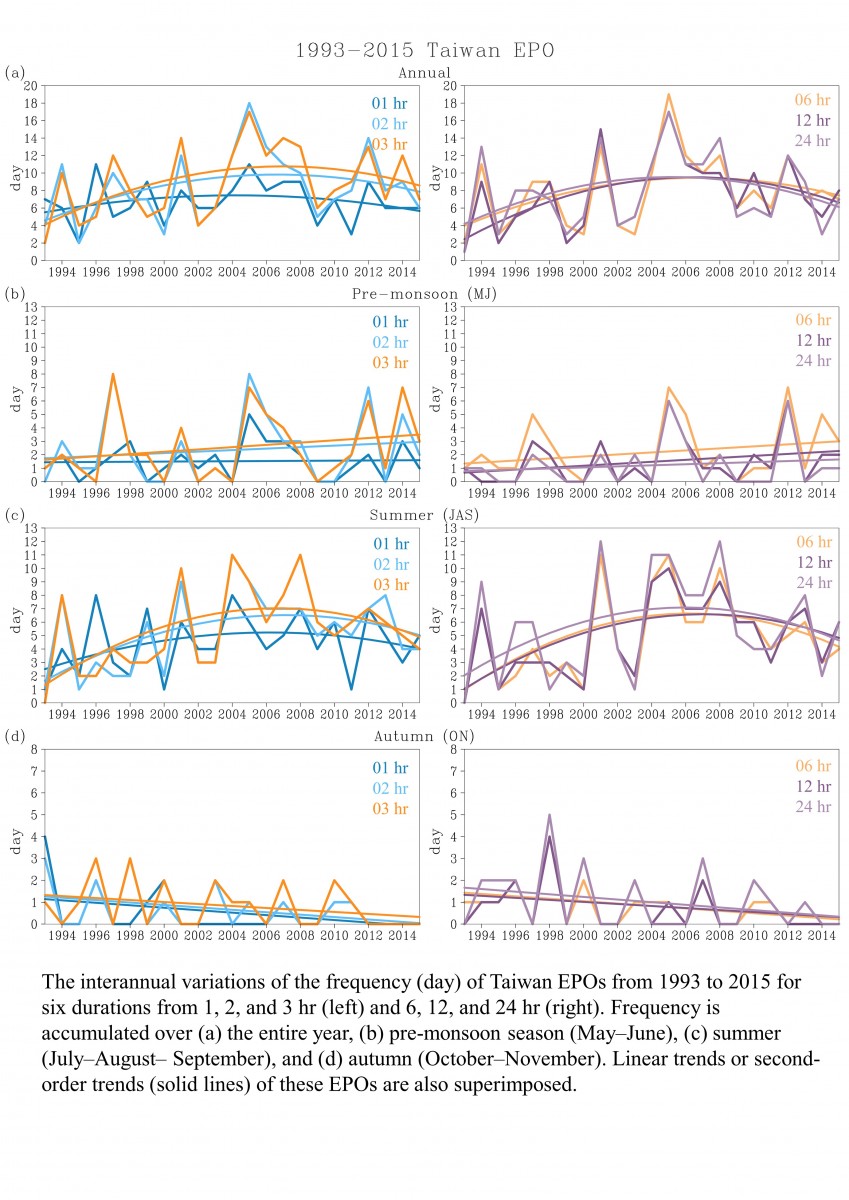1993–2015 Climatology and changes of extreme precipitation events in Taiwan based on weather types
Each year, the extreme rainfalls caused by typhoons, Meiyu fronts…etc. pose great threats to Taiwan. It is critical to study extreme rainfall to mitigate impacts possibly brought by hydro-meteorological disasters. Using the rain gauge observations from year 1993 to 2015, this study systematically analyzes the extreme rainfall events with six different durations (1, 2, 3, 6, 12, and 24 hours) to further realize the variability and change in extreme precipitation associated with the major weather types.
Three major weather types affecting the extreme precipitation occurrence (EPO) in Taiwan were identified: the tropical cyclone (TC) type, the front type, and the diurnal type rainfall events when no apparent synoptic systems are present. TC-type EPO shows the greatest overall contribution at longer (>6h) durations. Frontal/Meiyu systems prevail in the medium (3-6h) duration EPO. Diurnal/afternoon convection events contribute more to the shorter (< 3h) duration EPO. The 23-year changes in EPO were analyzed, and it was found that EPO of most durations have experienced an increasing trend, with the 3h and 12h trends having increased by 4.6 days each over the 23 years. However, apparent decadal-scale variability exists in these EPO. In particular, the longer duration (>6hr) EPO associated with the TC-type events in summer exhibit decreasing tendency after the mid-2000s,
The results of this study provide refined climatological distributions of extreme rainfall, which may be used to support the government’s efforts in redefining its criteria for weather related disasters in order to address the growing need for improved disaster prevention and adaptation strategies.

